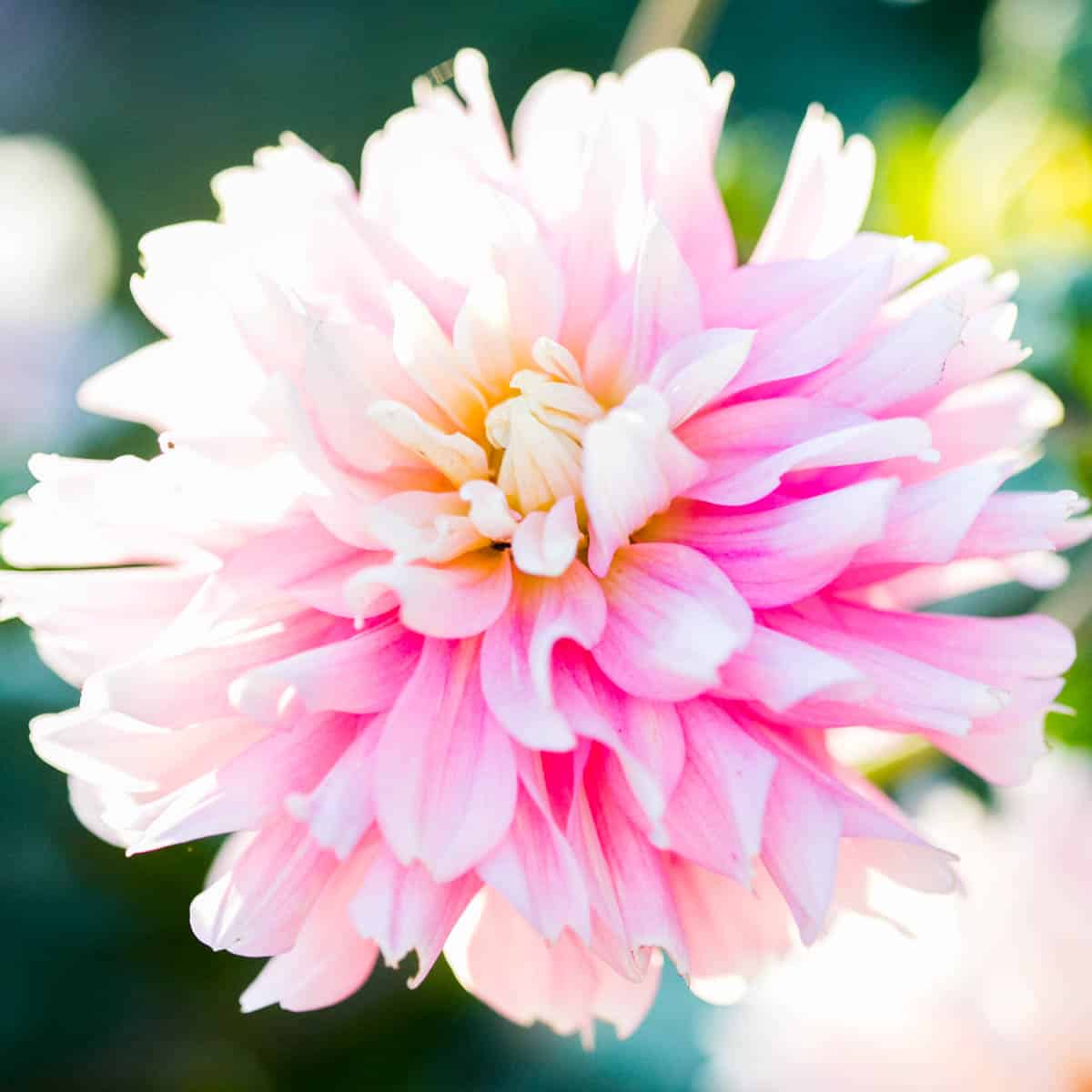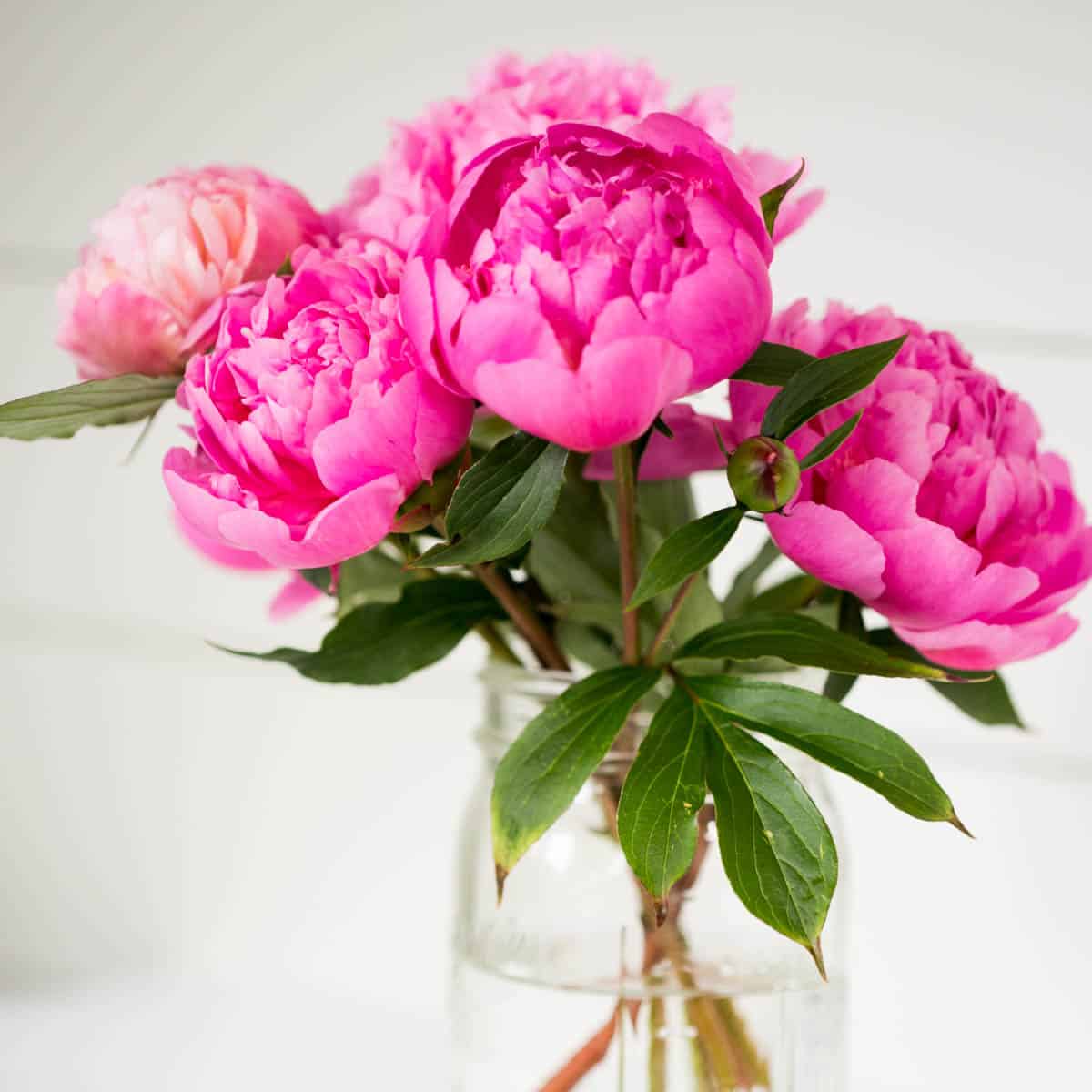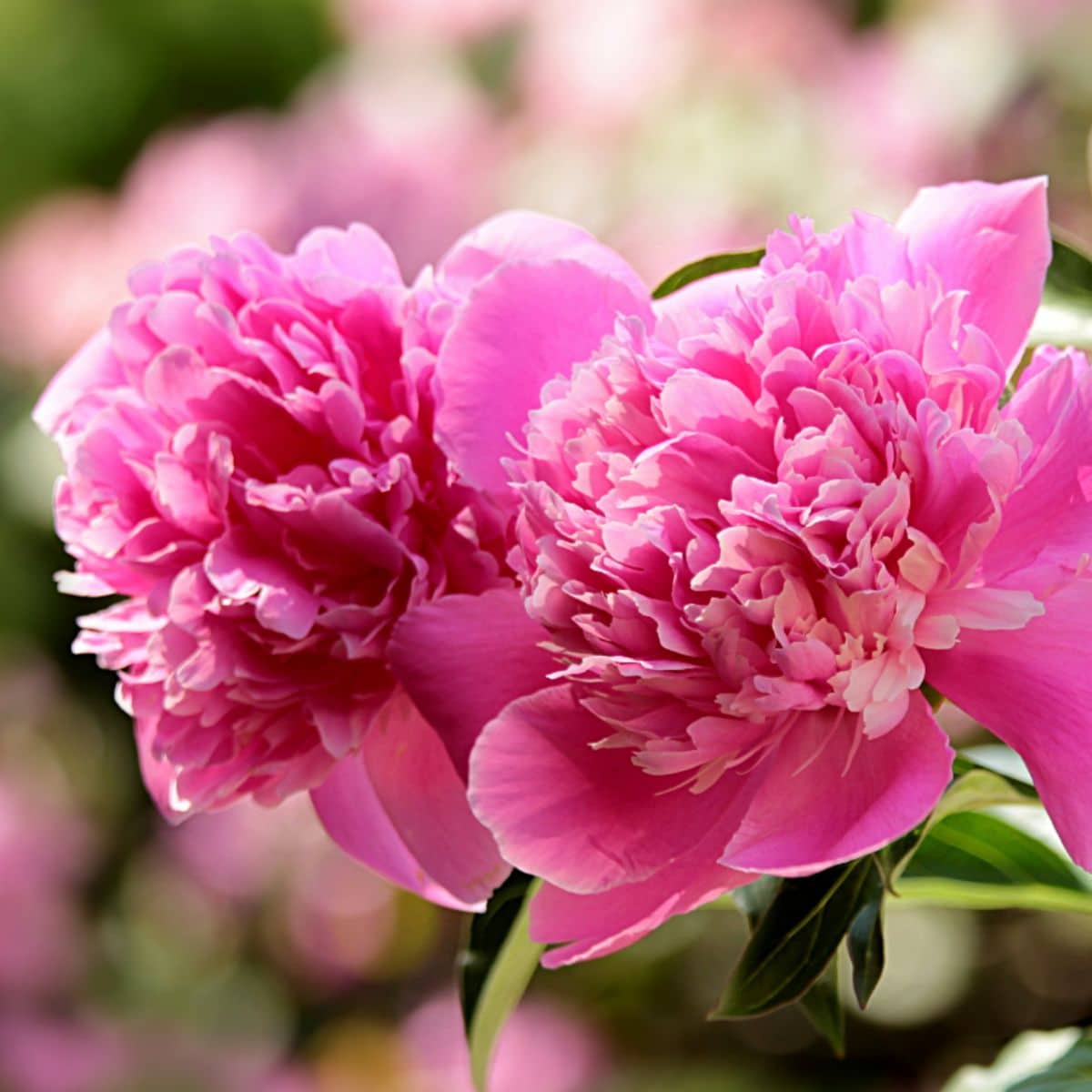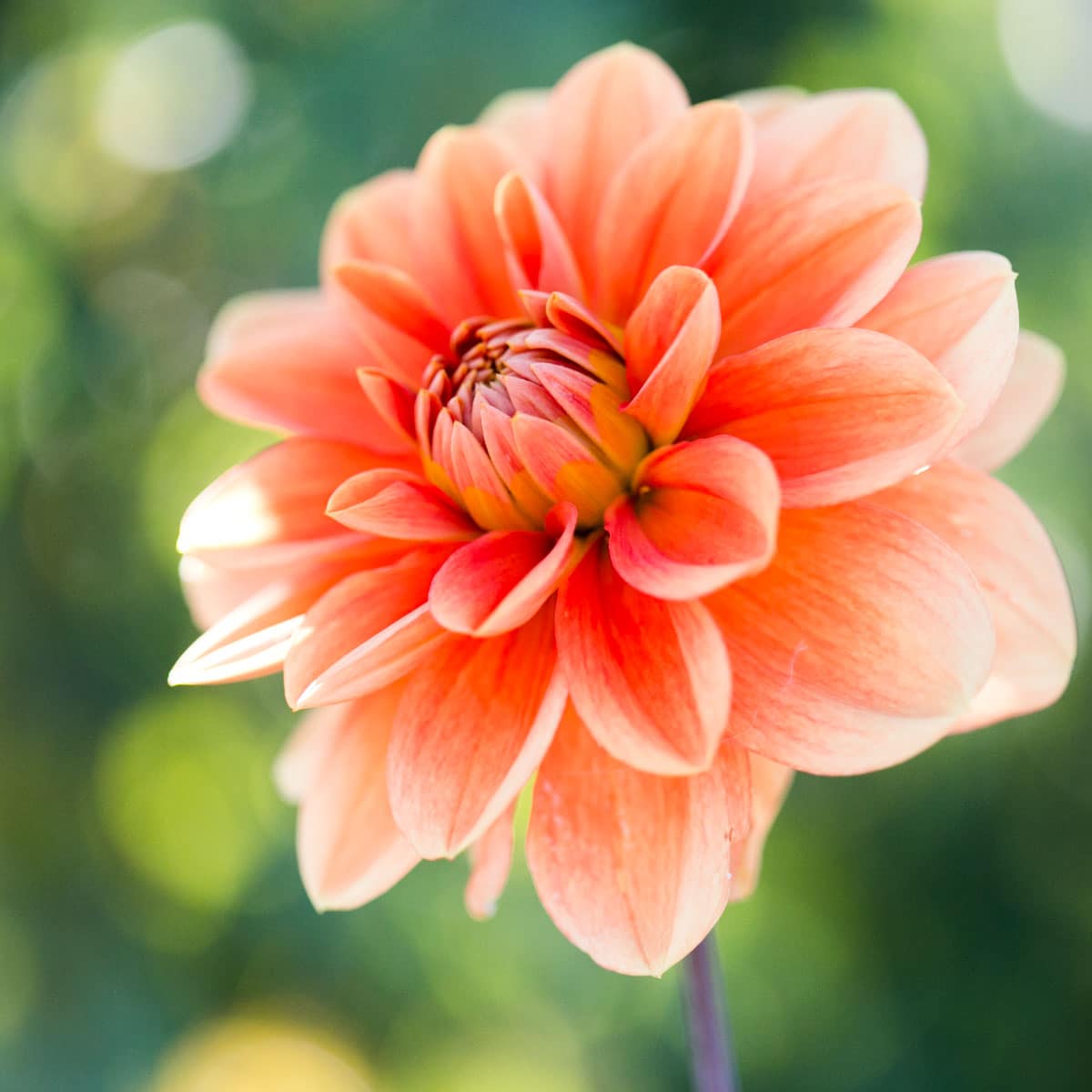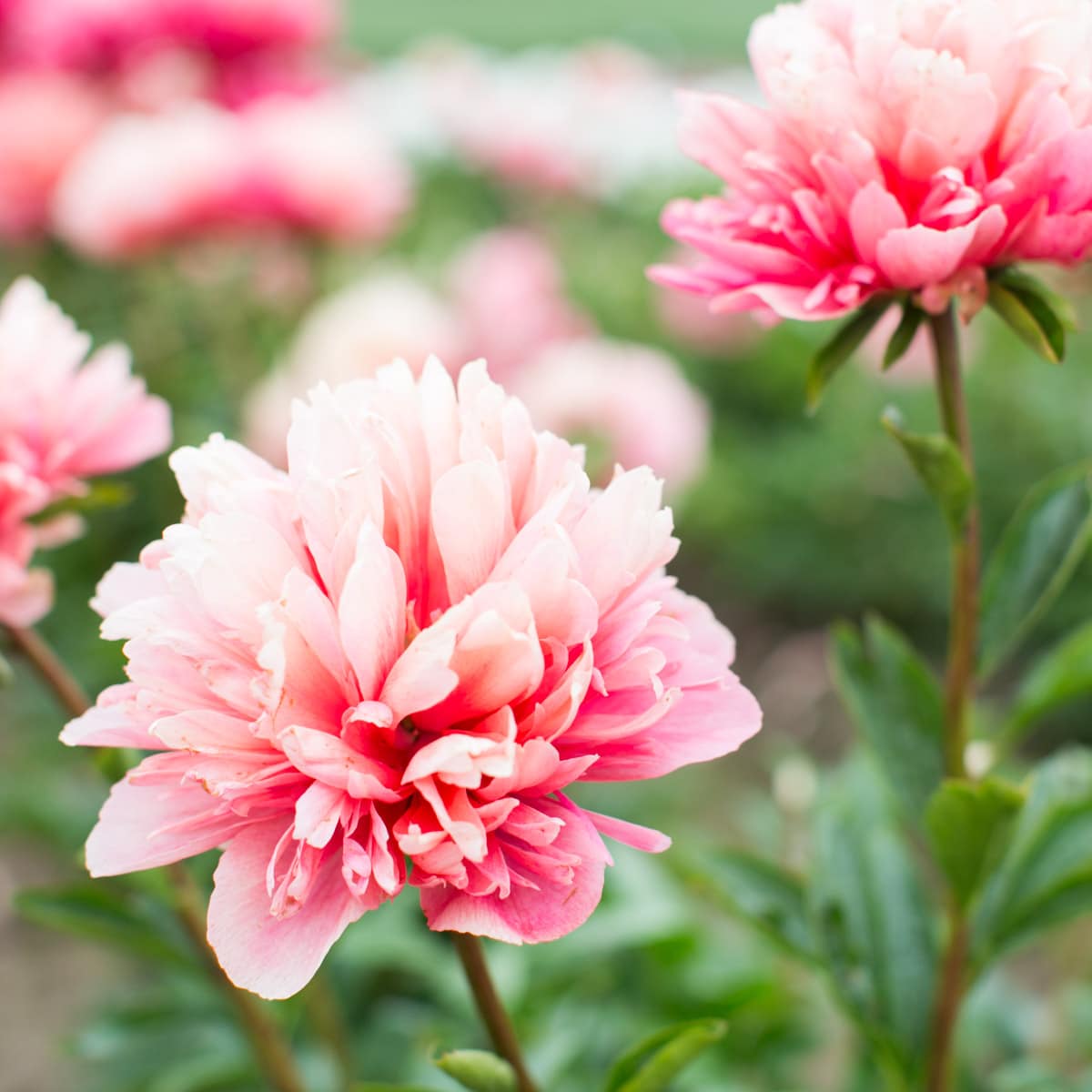Life Cycle Of A Sunflower (And Stages)
Sunflowers are one of the most popular flowers grown. After all, who wouldn’t fall in love with these garden giants? Their bright yellows and oranges, unique shapes and sizes, and tasty seeds are enough to hook anyone.

Sunflowers grow best during the summer and fall with lots of sunlight, and will grow almost anywhere! They thrive all over the United States. (Read about wild sunflowers here).
During their growing time sunflowers go through 8 different phases, each with unique characteristics and a very specific purpose.
Today we are sharing all about the life cycle of a sunflower.
This is not only a great way to learn about sunflowers and expand your plant vocabulary words, but it is an awesome study to do with young children.
But First, How Do Sunflower Seeds Grow?
Have you ever wondered how a huge, beautiful sunflower can grow from a tiny seed? Nature is full of wonderful mystery that humans can’t replicate even with technology.
Sunflowers start their lives as a young sunflower seed in the ground. The seed collects moisture and eventually cracks open to send out roots.

Sunflowers need warm soil to start germinate. In about ten days, a young plant, or seedling, is sent shooting up through the soil. Not all seedlings survive, some get eaten or rot. But with a little luck strong plants keep growing and push through the soil with a single stem and two leaves.
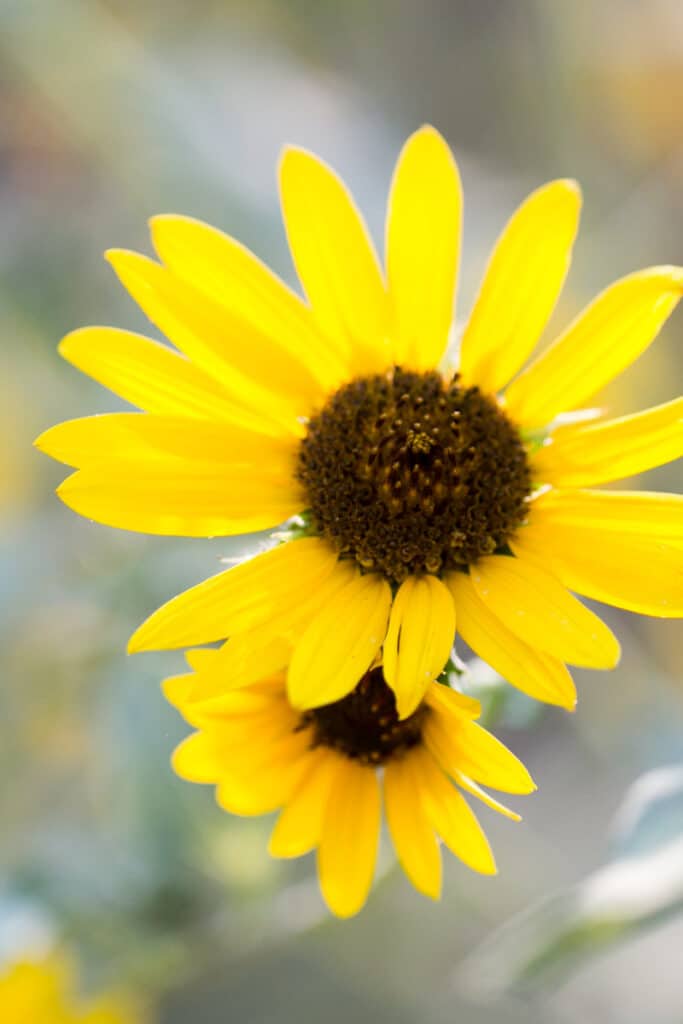
When grown in a sunny location with somewhat fertile soil, the young sunflower plant will send out a taproot, which is the main root that collects nutrients.
The root stalk and leaves will both continue to grow. Eventually, a flower bud will emerge at the tip of the stem, and a few weeks later it will bloom.
Sunflowers need consistent sunlight and adequate soil to complete their life cycle.
One of the best features about sunflowers is how easily the grow for new gardeners. They are very hardy and will grow in most climates and soil types.
Learn about the parts of a sunflower here.

Sunflower Life Cycle Stages
Sunflower life cycle stages are seed, germination, seedling, reproductive, pollination + flowering, seed development and harvesting.
Phase I: Seed
The first phase of a sunflower’s life is as a seed. Sunflower seeds are easily recognizable in shape and size. They are highly popular for consumption as they are both delicious and nutritious.
But their main purpose is to grow a new sunflower! These small seeds carry all of the genetic information needed to grow into a beautiful flower.
Sunflowers are usually planted in April or May. They should be planted in an area where they will have the most amount of sun possible. They are planted ¼ to ½ inch under the soil and must be kept moist at this point so that the seeds will be able to germinate.
Sunflowers have a “hard seed coat”. This hard outer shell collects moisture in the soil, and when it is wet enough, it will break open and the sunflower will germinate.

Phase II: Germination
Sunflower seeds will begin to germinate around 5-12 days after they are planted.
The amount of time it takes to germinate is partially determined by the temperature of the soil. Germination can occur in soil as cold as 39 degrees Fahrenheit, but ideal temperatures of around 70 degrees will hasten the process.
During this phase the seed will give way to a root which pushes down into the earth searching for nutrients. The other end of the seed will become the first leaves, the cotyledons, which will push their way above the ground to reach sunlight.

As with other plants, sunlight is essential to the sunflower’s growth and so the flower will search for light immediately.
While the sunflower is in the germination phase it is essential to keep the ground damp. Sunflower seeds carry many nutrients within which allow the growing plant to thrive in any type of soil.
At this time there will be a young sunflower sprout. These sprouts can be eaten like many other types of sprouts such as alfalfa. However, if they are eaten now it will end the growth process before it can be completed.
Phase III: Seedling and Vegetative
Now that your sunflower has sprouted above the earth it is a seedling. It will remain a seedling for around 11 to 13 days after it has sprouted.
This phase begins the growth of the taproot, which can grow up to 6 feet into the earth! From the taproot many smaller wispy roots grow.
The sunflower grows best in temperatures ranging from 70 to 78 degrees Fahrenheit and will soon grow into the vegetative stage of the sunflower.

This stage is divided into further sections by how many leaves over 4 cm long the flower has. The sunflower is considered to have entered the vegetative stage when it has one leaf over 4 cm.
This phase in the sunflower’s growth is when the plant will pour everything it has into growing taller and stronger. Later that energy will shift towards forming a flower and new seeds.
Sunflowers usually enter the vegetative stage in later May or early June. This time is very exciting as the plant’s leaves and stem will start to resemble a full grown sunflower more every day!

Phase IV: Reproductive
The reproductive stage of a sunflower’s life cycle is the stage during which the flower bud is formed.
This stage begins when you see the bud beginning to form at the top of the sunflower’s stem. This stage is extra exciting because it means that the sunflower is almost ready to bloom and show its beauty!
During this phase the sunflower will begin putting more of its energy into creating the seeds and flower. This means that it will not be growing as quickly as it did during its vegetative state.
Since sunflowers need more energy to continue to grow while producing a flower, they need more sunlight. They achieve this through following the sun, a process called heliotropism.
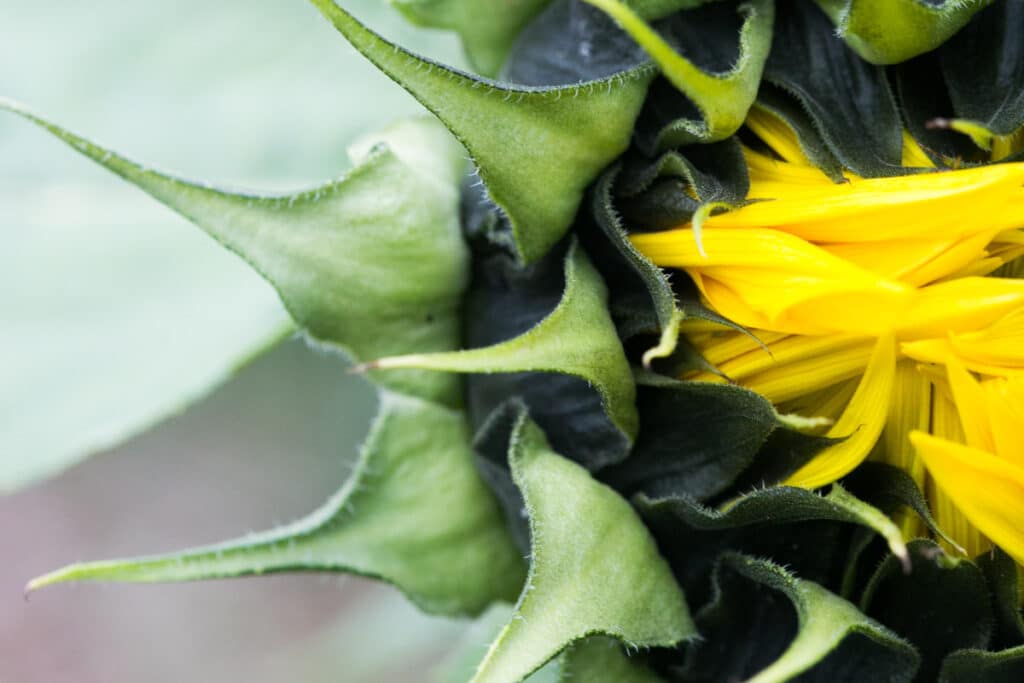
The young flower bud will begin facing the sun in the East, then follow it through the sky until it drops. Sunflowers are the only type of flower that will then turn its head back towards the East so that it will be facing the sun when it rises.
This process allows the sunflower to soak in as much sunlight as possible during the day.
At this point sunflowers are very hardy and self-sufficient. Unless the ground is extremely arid a sunflower does not even need to be watered in order to survive.
The reproductive stage of a sunflower’s growth will last around 3 to 4 weeks ending in July or August with the appearance of the long awaited flower!
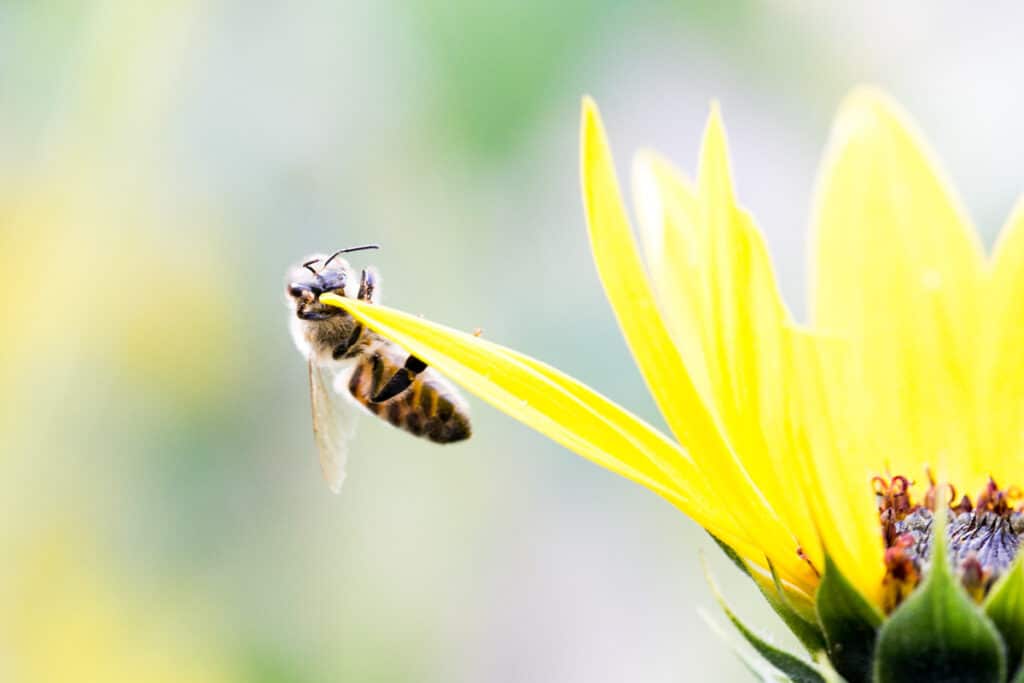
Phase V: Flowering and Pollination
Once a sunflower’s reproductive phase has ended it will enter the flowering and pollination phase. During this phase the bud which has been growing for the last month or so will open into a flower and be pollinated.
This is the most exciting stage of a sunflower’s growth as this is when the long awaited flower finally appears!
At this point the sunflower has grown as big as it is going to get and the stem has become hardened and woody. Now all of the energy the flower gets will be put into the flowering process.

With the flower open, a sunflower will no longer follow the sun in its dance across the sky.
This is because the stem of the flower has to become very stiff in order to keep the flower standing straight with the heavy head.
The flower head now starts to droop down because of its heaviness, but this is also beneficial. It prevents water from collecting in the head of the flower which can cause mold or fungal infections in the seeds.
Sunflowers can actually pollinate themselves but they are also pollinated by bees while the flower is blooming. The bees collect pollen from the thousands of tiny disk florets in the center of the flower and then spread it to other nearby flowers.

Uses For Sunflower Blooms
This time in a sunflower’s life cycle is the best for decorative purposes. The flower is in full bloom and not yet wilting. Sunflowers will bloom for about 20 days, giving you ample time to enjoy the beautiful blooms.
Sunflower’s blossoms can be used in bouquets or beautiful autumn wreaths for your front door. They are very popular for wedding decoration.
They also have developed a correlation with longevity because of their reputation for lasting very long periods of time when cut. This makes sunflowers perfect to put in a vase without further worry.
Learn about the meaning and symbolism of sunflowers here.
Phase VI: Seed Development
Seed development is the climax of life for a sunflower. Their whole growth period and their beautiful blossom are all part of the sunflower’s life cycle that leads to the development of seeds.
The seeds from the plant will ensure that a new generation of sunflowers will arrive next summer.
After the flower has been pollinated, it starts to develop its seeds. The central disk florets which were pollinated earlier in the year will swell and begin to harden. The process of seed development usually takes around 30 days.
Dried seeds are a great food for insects and small animals, so you have to watch out for them if you want any left to harvest!
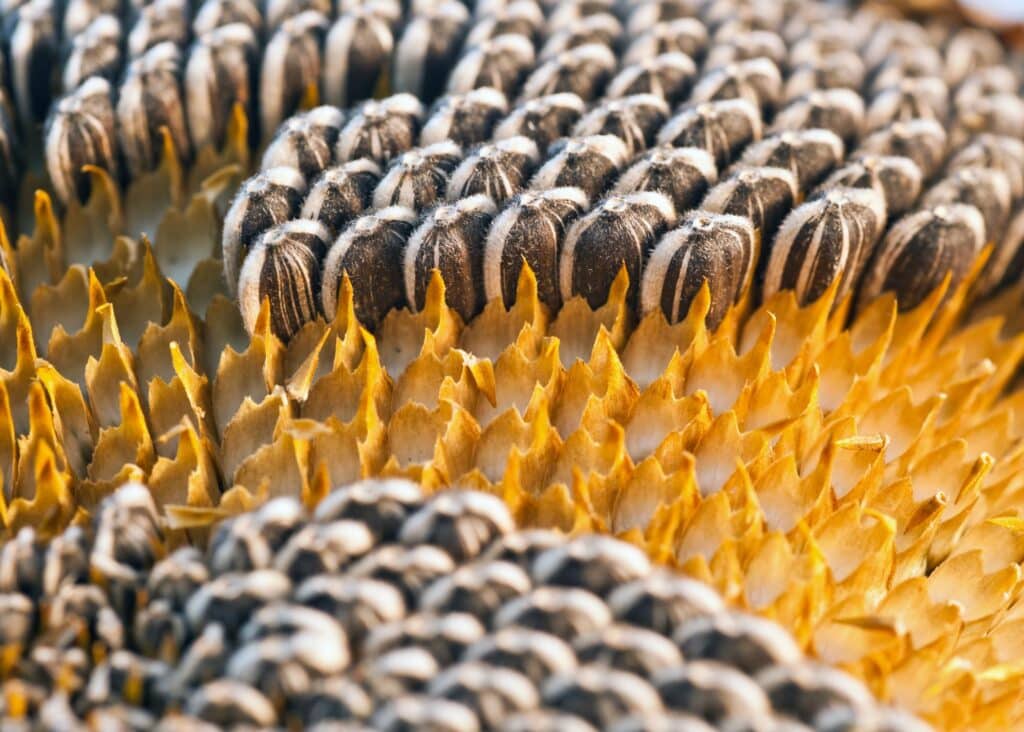
Phase VII: Harvesting
Once the plant has bloomed and seed development has finished, one of two things must happen.
The plant can be harvested and dried to collect seeds for consumption or for planting again the next year. Or, the plant will die since it has completed its life cycle.
You can tell that a sunflower plant is ready to harvest when the head is very droopy and the petals are falling. The back of the flower will turn yellow and then more brown in color as it dies, a sure sign it is ready for picking.
To harvest a sunflower you can cut it, leaving a 4 to 12 inch stem. Then hang it upside down in a breathable bag, making sure it is somewhere dry and safe from hungry critters! Once the seeds are fully dry they can be removed by rubbing two sunflower heads together or rubbing them with a stiff brush.

If a sunflower is not harvested it will die and the seeds will fall. Insects and small animals love to eat the seeds and so most of them will become food for the wildlife.
If any of the seeds remain on the ground, they may be covered with leaves and remain all winter. In the spring they can germinate and a new batch of sunflowers will appear!
Share Sunflower Knowledge With A Child
Sunflowers are a fun unit study to do with children during the warm summer months. By growing just one sunflower you can study so many different topics.
Summer is just the right time to study flowers! Here are a few ideas to create a comprehensive unit study when growing your own sunflower with kids:
- Fine Motor Skills for young children (planting, watering, harvesting seeds)
- Botany (parts of a plant)
- Art (we love this book on Vincent Van Gogh)
- Paper plate sunflowers
- Creating Writing (write a creative story about a sunflower)
- Social studies: different cultures and the meaning and symbolism of sunflowers
- Sunflower Coloring Pages
The life cycle of a sunflower is truly fascinating. Year after year we watch this sunflower life cycle repeat itself, and enjoy it’s vibrant summer blooms over and over again.

